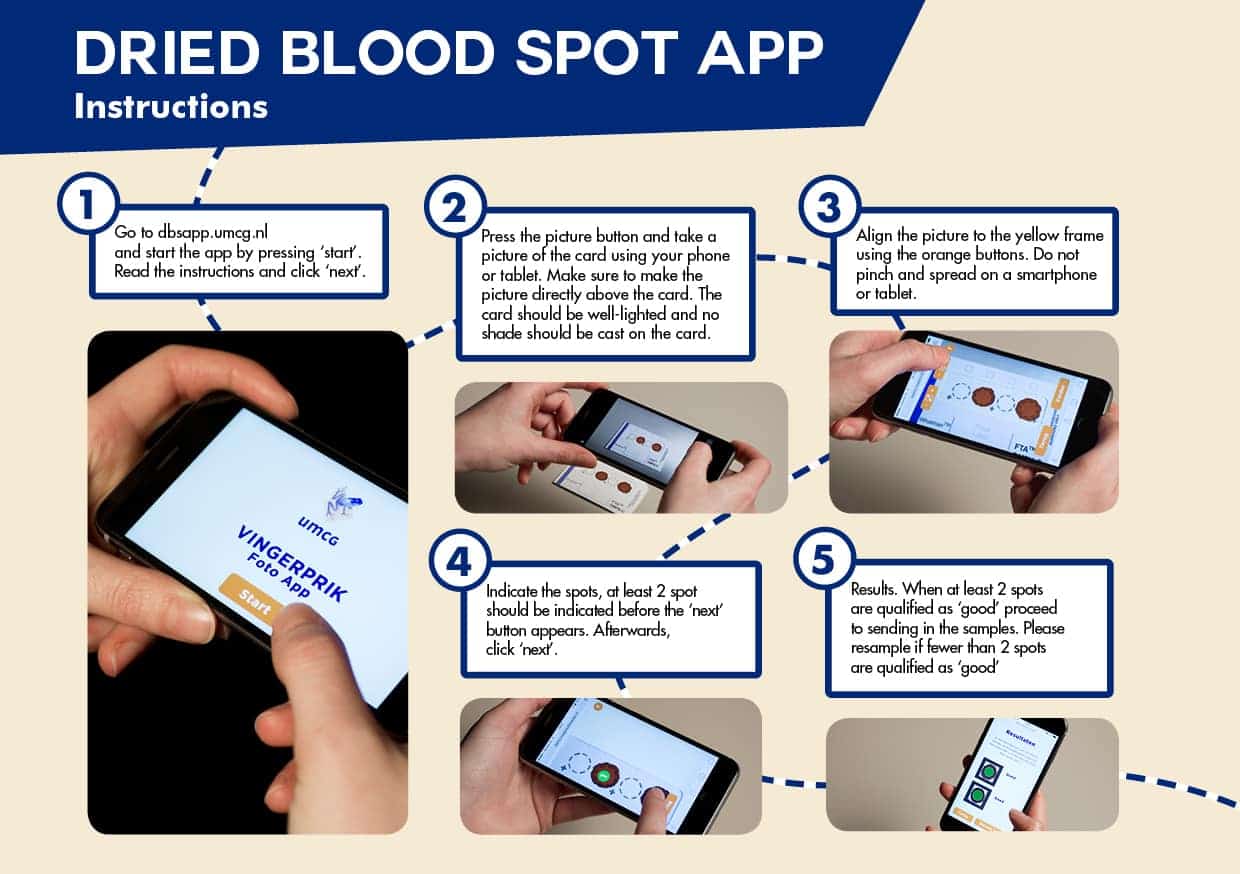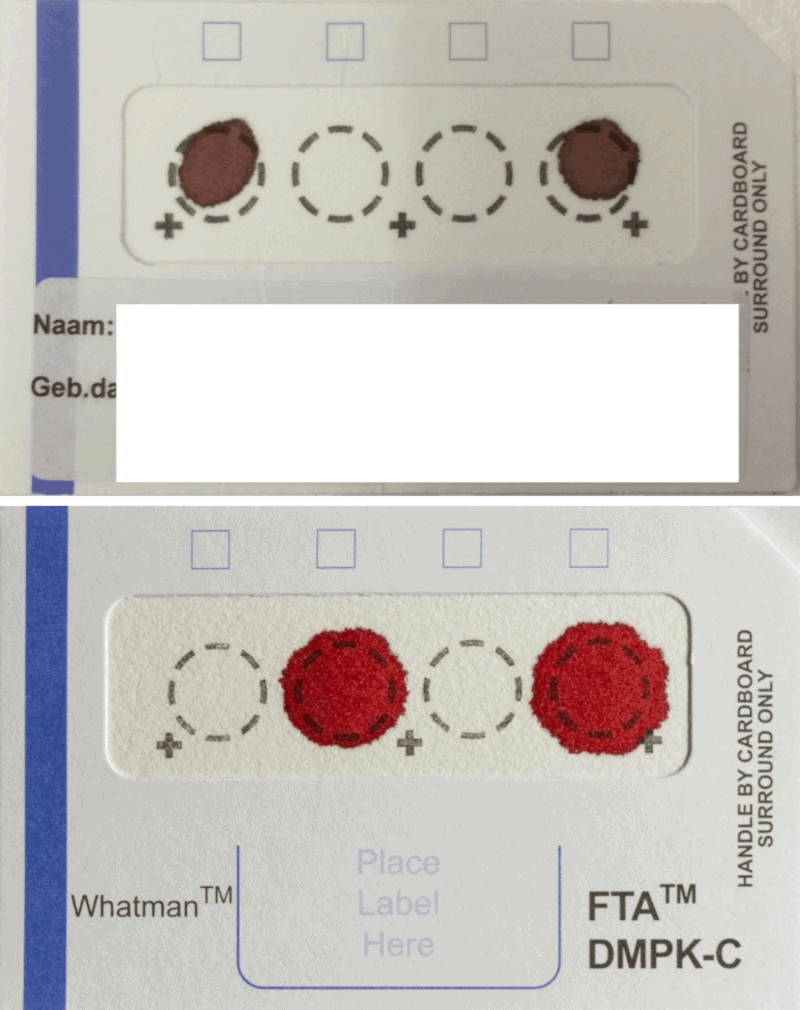Blood collection at home – New app helps patients tell a “good” from a “bad” spot
These days, instead of going to the hospital, many patients take their own blood samples at home and send them to the laboratory via mail. Despite the obvious benefits, sampling is often done incorrectly, leading to up to 20% of samples being unusable. To change this, a group of Dutch researchers has developed an app that is able to tell if a dried blood spot is of sufficient quality or not.
By Herman Veenhof
Getting blood tests can be a pain – especially when they require needles and regular journeys to the hospital. Luckily, today’s patients can draw on alternatives: The Dried Blood Spot (DBS) method is a sampling procedure that is less painful, easier and can be performed at home. Simply by pricking their finger, patients collect a few drops of blood on a sampling card and then mail it to the laboratory.
Since patients do not need to go to the hospital, the DBS method saves time and money and is therefore finding increasing use worldwide. Transplant patients, who need to monitor their immunosuppressive blood drug levels frequently, benefit especially from this method.
Nevertheless, DBS sampling is often done incorrectly: laboratories reject up to 20% of samples upon arrival because of insufficient quality. For patients, this means they need to take another sample, which delays clinical results. For researchers, erroneous sampling can lead to missing data and thus decrease the quality of their scientific research.
To counter these problems, Dutch researchers have developed an app capable of assessing the quality of dried blood spots by analyzing pictures of the samples. The app, which can be accessed via smartphone, tablet and PC, has already been tested in patient care, as well as in a research setting.

In the study, as recently presented in the journal Clinical Chemistry and Laboratory Medicine, the researchers used DBS samples from a previous experiment. Of those samples, only 44% were of sufficient quality when they arrived at the laboratory. Later, when developing the app, the researchers used the pictures they had taken back then, to answer the question: What if the app had been available to the people that took the original samples?
They found that in the patient care setting, the correct use of the app could improve the amount of sufficient quality DBS samples from 80% to 96%. In the research setting, the increase could even be higher: from 42% to 88%. However, the researchers stress that, for the app to work correctly, patients need to follow the instructions very carefully. “After implementation of the app, additional development regarding robustness and usability will be needed”, they add.
Read the original article here:
Want to try the app yourself? Visit the app here and use the pictures below to check which spots are good and which are bad!
